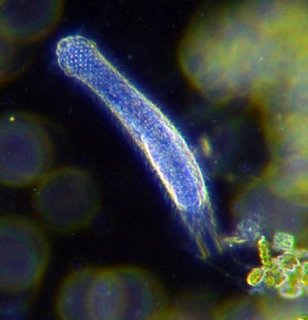![]()
by Pamela Weintraub

From the time National Institutes of Health medical entomologist Willy Burgdorfer first sliced open deer ticks from Shelter Island (off of Long Island) and studied them under the microscope in his Montana lab, he observed a glut of microbes. He traced just one of them—B. burgdorferi, the spirochete named after him—to the disease studied in Connecticut and called Lyme.
But right from the start he suspected that as far as the patients went, other organisms could be involved as well. Sitting next to Burgdorfer in a sun-drenched conference room at the Rocky Mountain Laboratories, I watched him remove from his ancient briefcase a handwritten chart that had withstood the test of time. Yellowed and creased, the paper listed microbes, six in all. “These,” he told me, “are what I found in the Shelter Island ticks.”
He would not give me a copy, but he let me look. I saw the spirochete B. burgdorferi on his chart, of course, but I also observed an organism, larger than a bacterium, called a nematode worm. (The worm’s potential for disease, said Burgdorfer, was unknown.)
I took definite note, therefore, when Richard Ostfeld, an animal ecologist at the Institute for Ecosystem Studies, in the Dutchess County town of Millbrook, New York, told me he’d found nematode worms in deer ticks, too.
I paid even more attention when the finding was confirmed in Connecticut by University of New Haven microbiologist Eva Sapi and announced at the school’s Lyme symposium in 2007. Neither scientist knew what to make of the worms, nor that they’d been observed by others before.
Whether nematode worms living in ticks will ever be implicated in human disease has yet to be seen. But if they are, says Sapi, then treating that infection could make all the difference in the world for a subset of patients who remain sick.
The take-home message is this: Ticks that carry the pathogen of Lyme disease harbor many other organisms, some known to cause serious human disease, others not traced to human infection or still undiscovered and unexplored. Over the next few weeks, look to this space for coverage of the coinfections accompanying or mistaken for the common epidemic disease called Lyme.
 Pamela Weintraub is the author of Cure Unknown: Inside the Lyme Epidemic and senior editor at Discover Magazine. This essay is part of a series found on her blog.
Pamela Weintraub is the author of Cure Unknown: Inside the Lyme Epidemic and senior editor at Discover Magazine. This essay is part of a series found on her blog.









0 Comments